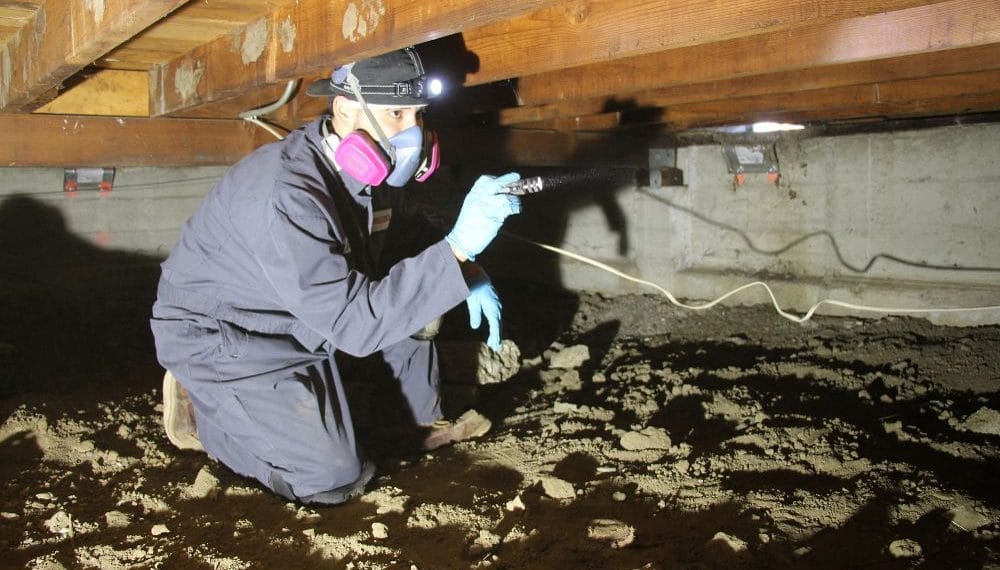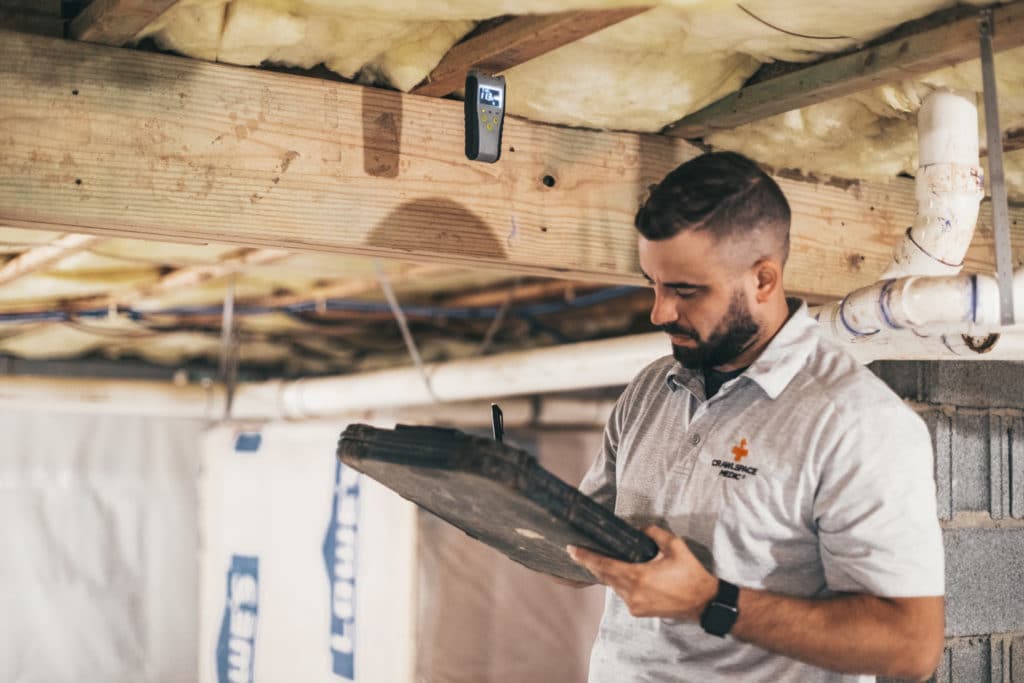Did you know that the weight of an average US home is between 80 and 160 tons? To that, you have to add the foundation at seven-and-a-half tons.
The foundation is a critical component of the overall construction of your house. The foundations provide a flat platform upon which to construct a house. Additionally, they act as an insulator and keep moisture out of the home.
It is not the appearance of a building that you should look at. It is the foundation’s construction that will withstand the test of time. So the question is: Can water damage a foundation?
Water damage to the foundation can erode the stability of your house. It can result in cracks, bent walls, and in some severe instances, the collapse of the home itself.
Are you wondering whether water may harm a home’s foundation? If yes, continue reading.
Can Water Damage a Foundation?
Water damage to a home’s foundation may occur in a variety of ways. The consequences and treatments are similarly diverse.
It’s never pleasant to learn that anything can jeopardize the most basic structure of your house in any manner. However, it is important to understand the facts and take remedial action as quickly as possible to avoid escalating a negative situation.
The soil’s load-bearing ability becomes weak when water saturates the soils surrounding a house. This can happen as a result of:
- Severe rain
- Floods
- Thawing snow
- Plumbing leaks
- Damaged water lines
First, let’s go through the three primary ways water impacts the soil surrounding a house. This often results in serious foundation damage to the home.
1. The Force Exerted by Water on a Surface or Hydrostatic Pressure
Hydrostatic pressure is a term used to describe the force exerted by water on a surface.
Whenever water collects around a house due to the circumstances described above, this creates “hydrostatic pressure” on the foundation of the building. This is dangerous. This pressure may cause foundations to fracture and bend, which will result in foundation leakage.
2. Expansive Soils
Expansive soils are found in almost every state. Expansive soil includes minerals that are capable of absorbing water. The greater the amount of water absorbed, the greater the increase in the volume of the soil.
These soils press upon the foundation, causing fractures in the walls or floor to appear. But, of course, it goes without saying that when expansive soil starts to dry up, it shrinks.
This recurrent cycle of expansion and contraction puts stress on houses. The resultant damage may become more severe over time, which makes water mitigation at the foundation so vital.
As per geology.com, expanding soils inflict more financial damage in the US than floods, earthquakes, tornadoes, and hurricanes.
3. Erosion of Soil
Rainwater or subterranean springs have the potential to progressively wash away the soil that maintains the foundation over a period of time. That erosion causes the settlement of the foundation.
Symptoms of early foundation settling aren’t usually apparent. The average homeowner may easily overlook them until they are serious enough to need professional intervention.

What Are the Signs of Foundation Water Damage?
To evaluate if a water issue has caused damage to the foundation, you need to consider several indicators. Here’s how to recognize the early warnings of foundation water damage and take action before you need to worry about a plastic foundation water barrier.
Foundation and Wall Cracks
Cracks in the foundation are an obvious indication of foundation water issues. They can, of course, appear both inside and outside of the house.
Cracks in concrete foundations are not uncommon because they are exposed to the elements. However, a few hairline cracks are usually not a reason for worry.
Horizontal cracking, sagging floors, and stair-step fractures in block walls or corners, on the other hand, may signal severe structural issues. If you see any of these warning signals, you should contact a water restoration expert to evaluate whether it’s typical settling or foundation damage.
If you neglect the problem, you will soon see cracks around doors, window sealing, and the joints where walls and ceilings meet.
Keep an eye out for places that collect outside water. These could include window sealing and door frames. Check for cracks in such places and ensure they are properly sealed to avoid moisture from seeping into your house and creating further water damage.
Pooling Water in a Crawlspace or Basement
Having water in a basement or flooding in a crawlspace may indicate a plumbing problem caused by damaged pipes or malfunctioning equipment.
However, the cause could be water seeping in via fractures in the foundation or rainwater running off the roof.
Water pooling in your crawlspace or basement after severe rains is most likely the result of one of the two scenarios listed above. In addition, mold development and the weakening of wooden structural components are also risks associated with seepage. This makes it even more imperative to treat the issue.
Waterlogged Windows & Doors
If you see that your doors or windows are becoming stuck or not opening or closing correctly, this may be a sign of damage caused by foundation water.
If excessive amounts of water absorb into your home, this can cause warping in the frames of your window and doors. This indicates that you have a crawl space or basement waterproofing issue.
Excessive outside moisture may also cause your foundation to move, which can cause alignment issues with your doors and windows. In this case, you may have a more serious foundation issue to rectify.
In any event, it is essential to ensure that you properly insulate and close your doors and windows. If you don’t, the consequences will be mold, water damage, and major repair bills.
Patches of Mold or Rotting Wood
Mold patches are a significant indicator of water damage. Even if you cannot see them, you’ll certainly smell the characteristic moldy odor. This may be as a result of a foundation fracture or opening that allows water to leak in.
Mold requires two things to develop: a supply of moisture and organic matter. You may see it on inside walls or wooden beams on the outside of the home.
Another obvious indication of water damage is soggy, moldy, or rotting wood. This requires urgent action since it may result in an unsafe building.
Soggy Soil
Walk the perimeter of your home and examine the soil that surrounds your home. Suppose you discover that it is extremely wet or you see water pooling. This may be a predictor of foundation issues.
Conversely, exceedingly moist soil raises the chance of water penetrating your home’s foundation and causing future problems.
There could be a couple of reasons for this:
- There may be a natural issue with the soil’s moisture absorption properties
- It may be a case of human mistakes like insufficient drainage systems or landscape gardening
- Your roof guttering or other drainages are not built or maintained adequately
Any of these may result in water being redirected toward your foundation rather than away from your home. Additionally, the slope of your property should enable the water to flow away from your home.
Ensure that you do your home tasks regularly and that your gutters are not damaged or blocked with debris.

How Do I Prevent Foundation Water Damage?
There are many methods for resolving a water issue and preventing future leaks and foundation damage. That, of course, depends on the source of the water in the foundation.
Keep the Foundations Dry
Constructing a barrier to keep water from a house foundation is a simple and low-cost fix. How? By maintaining and cleaning the following:
- Gutters
- Extended downpipes
- Grading of land
- Yard drainage
If a more severe water problem is present, it may be necessary to install an extra drainage sump pump. Pumping water out of the basement or crawl area will help keep the foundation dry.
Fixing Damages to the Outside and Inside of Your Home
More severe problems include a sinking foundation and cracked basement walls. When the very framework that keeps your whole home standing is threatened, it’s a terrifying experience.
But, thanks to established foundation repair methods and materials, you can resolve most issues with little disturbance to the house.
Engage the Services of a Foundation Repair Specialist
A specialist will be able to help you save your home if you have severe foundation problems.
Experts may repair structural damage caused by long-term water damage. After removing all subterranean water sources, the experts will construct underground supports, called “piers,” pushed through the foundation bedrock.
Foundation specialists can install carbon fiber or steel bands to support a bending basement wall. The sooner you seek expert help, the better and less expensive the results.
Maintain a Solid Foundation
In this post, we’ve answered the question, “Can water damage a foundation?” We’ve also explained how you can treat it and save on costly home repairs.
Remember that a few fine cracks in your foundation are normal. However, when you see numerous fractures or things starting to move, you should be worried about foundation water damage.
While you can’t control the effects of the weather on your foundation, you can avoid it by following the above suggestions. The most important fact is, if you suspect foundation water damage, act quickly and contact us for an evaluation.

